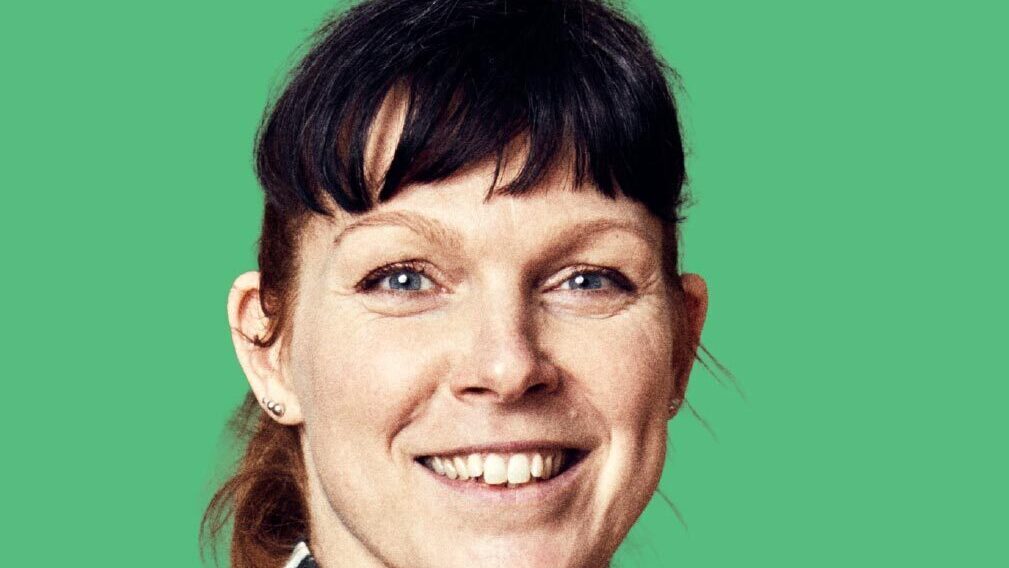Designer Aniela Hoitink registered her trademark, idea and invention step by step

Designer Aniela Hoitink registered her trademark, idea and invention step by step
Would you like a new outfit? Well, just go ahead and buy one! Are your clothes frayed or torn? Just get rid of them! Here's a thing: the mountain of discarded clothes is ever-growing, while more and more water and land is needed to make more and more clothes. Surely we can do things differently? That’s what the Dutch fashion designer Aniela Hoitink thought in 2008. Now her innovative lab is making interior products out of mushroom roots. Aniela registered what began with an idea straightaway – and that proved to be a smart thing to do.
“In 2008 I gave up my job and started my own business: NEFFA. It stands for Net Effe Anders,” [in English: Just that little bit different] says Aniela. Bored and fed up with the world of fast fashion, she went looking for alternative ways to make sustainable, innovative clothes that are also of high quality. Fast forward to 2025 and Aniela has her own 260 m² business unit, including a lab – which she set up herself – where there are eight people working and where they do things just that little bit differently.
The first steps towards protection
Aniela: “When I started my business I registered my brand as a trademark straightaway. I previously worked in the fashion industry, where you find all kinds of registered brands of course. So I was already familiar with intellectual property rights like design rights and brand protection in the fashion world. I also have an i-DEPOT, to have it recorded that I was the first one to come up with my idea.” An i-DEPOT is an official certificate you can use to show that you had a particular idea, design or concept on a particular date.
From idea to innovation: a dress made of mycelium
“Fifteen years ago, I didn’t think that someone from the fashion world could have their own lab,” says Aniela. “In 2014, through an open call from Utrecht University, I was given the chance with other designers and artists to make products with mycelium, or in other words, mushroom roots.” She began to do independent research in the lab, read countless papers and managed to grow some samples. Two years later Aniela succeeded in making a complete dress from mycelium discs that came out of a petri dish.
“It’s interesting for investors if your company owns a patent. I didn’t know that at first.”

There was a lot of interest in the dress, says Aniela. “Everyone was excited about my proof of concept. I thought it was great too. I was able to continue working in the lab, as long as I didn’t get in anyone’s way. Then I began to win prizes, including the H&M Foundation Global Change Award in 2018.” It also brought Aniela into contact for the first time with the world of patents.
Investors are interested in start-ups with patents
Aniela: “Until I won the H&M Foundation prize I’d never thought about patents, but then somebody said something about patents in relation to investment. That was interesting for me, because as a start-up I needed investors. So I started looking into it. As a start-up, my patent application made me more attractive to investors, because a patent is something of value.”
Limited budget means doing a lot yourself
Just like most start-ups with a limited budget, Aniela takes care of an awful lot in and around her business herself. Take, for instance, the registration of her Benelux trademark: “Looking around I landed quickly on BOIP. The registration process went fairly smoothly. Now I’m busy with extending my registration to other countries though. In the end I found someone to help me with that, because you have to figure everything out for each different country.”
Get professional help early on
The same is also true for her patent application. Aniela: “I did a lot of research into patents. I did a number of workshops with the Netherlands Patent Office, and I had a preliminary study done there. If you want a good patent though, you must have a professional write that for you. A good patent costs time and money, and you only get one chance to do it properly.”
Spectacular growth
Looking back, Aniela feels her business went through a period of ‘fairly’ spectacular growth: “Now we’re developing the first and most advanced supply chain for biomaterials in the world.” Under the brand names MYCOTEX and PARYCEL the company makes materials based on mycelium, from which interior products are manufactured, and in the future also clothing – in 3D, so there’s no sewing or cutting waste.
| Tip from our experts: Do you have a technical invention but haven’t applied for a patent for it yet? Keep it secret then, because if you make that invention public knowledge, you will no longer be able to get a patent for it. You can read how to keep a good secret in our smart guide on trade secrets. |